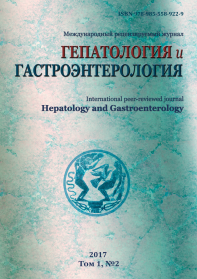СВОБОДНЫЕ АМИНОКИСЛОТЫ ПЕЧЕНИ ПОСЛЕ ВНУТРИЖЕЛУДОЧНОГО ВВЕДЕНИЯ ЖИВОТНЫМ ИНФЕЗОЛА40
Аннотация
Введение. Широкое использование аминокислотных добавок в профилактической и спортивной медицине, их назначение при заболеваниях печени, лечении инсулинорезистентности и ожирения, предполагает их энтеральное введение.
Целью исследования явился анализ концентраций свободных аминокислот в ткани печени крыс в динамике после внутрижелудочного введения Инфезола40.
Материалы и методы. Эксперимент проводился на крысах массой 120-140 г, которым внутрижелудочно вводили раствор Инфезол40 (№ серии 42005012 BERLIN-CHEMIE MENARI №1, 12489, Германия) в дозе 20 мл/кг массы, декапитацию животных осуществляли через 10 мин, 20 мин, 30 мин или 45 мин, соответственно. Определение свободных аминокислот в ткани печени производили методом обращеннофазной ВЭЖХ.
Результаты и обсуждение. В течение 45 мин после внутрижелудочного введения Инфезола40 в ткани печени общее количество протеиногенных аминокислот не изменяется, однако, на этом фоне статистически значимо увеличивался уровень аргинина и повышалось соотношение аргинин/цитруллин.
Выводы. Таким образом, поступающие в клетки тонкого кишечника аминокислоты в существенной степени влияют на метаболизм этих клеток, что модулирует количество и спектр аминокислот достигающий печени. В свою очередь их превращения в печени должно оказывать влияние на аминокислотный пулплазмы крови.
Литература
1. Hanigan MD, Crompton LA, Reynolds CK, Wray-Cahen D, Lomax MA, France J. An integrative model of amino acid metabolism in the liver of the lactating dairy cow. J. Theor. Biol. 2004;228(2):271-289.
2. Tietge UJ, Bahr MJ, Manns MP, Böker KH. Hepatic amino-acid metabolism in liver cirrhosis and in the long-term course after liver transplantation. Trans Int. 2003;16(1):1-8. doi: 10.1007/s00147-002-0484-z.
3. Dejong CH, van de Poll MC, Soeters PB, Jalan R, Olde Damink SW. Aromatic amino acid metabolism during liver failure. J. Nutr. 2007;137(6 Suppl 1):1579S-585S.
4. Sheibak VM. Lejcin, izolejcin, valin: biohimicheskie osnovy razrabotki novyh lekarstvennyh sredstv [Leucine, isoleucine, valine: biochemical basis for the development of new drugs: monograph]. Grodno: GrGMU; 2014. 242 p. (Russian).
5. Beck KL, Thomson JS, Swift RJ, von Hurst PR. Role of nutrition in performance enhancement and postexercise recovery. Open Access J. Sports Med. 2015;(6):259-267. doi: 10.2147/OAJSM.S33605.
6. Schricker Т, Lattermann R. Strategies to attenuate the catabolic response to surgery and improve perioperative outcomes. Can. J. Anesth. 2007;54(6):414-419. doi: 10.1007/BF03022026.
7. Faure M, Chone F, Mettraux C, Godin JP, Bechereau F, Vuichoud J, Papet I, Breuille D, Obled C. Threonine utilization for synthesis of acute phase proteins, intestinal proteins, and mucins is increased during sepsis in rats. J. Nutr. 2007;137(7):1802-1807.
8. Locasale JW. Serine, glycine and the one-carbon cycle: cancer metabolism in full circle. Nat. Rev. Cancer. 2013;13(8):572-583. doi: 10.1038/nrc3557.
9. Nikolic J, Stojanovic I, Pavlovic R, Sokolovic D, Bjelakovic G, Beninati S. The role of L-arginine in toxic liver failure: interrelation of arginase, polyamine catabolic enzymes and nitric oxide synthase. Amino Acids. 2007;32(1):127-131. doi: 10.1007/s00726-006-0309-y.
10. Sheibak VM, Pauliukavets AYu, Smirnov VYu, Nikolayeva IV, Sheibak LN, Olekhnovich EV. Dinamika izmenenij koncentracij svobodnyh aminokislot v mikrobno-tkanevom komplekse posle vvedenija zhivotnym infezola40 [Dynamics of changes in the concentrations of free amino acids in the microbial-tissue complex after administration to animals of Infezol 40]. Zhurnal Grodnenskogo gosudarstvennogo medicinskogo universiteta [Journal of the Grodno State Medical University]. 2017;15(4):386-391. doi: 10.25298/2221-8785-2017-15-4-386-391. (Russian).
11. Reeds PJ, Burrin DG, Stoll B, Jahoor F. Intestinal glutamate metabolism. J. Nutr. 2000;130(4 Suppl):978S-982S.
12. Gebhardt R, Coffer PJ. Hepatic autophagy is differentially regulated in periportal and pericentral zones - a general mechanism relevant for other tissues? Cell Commun. Signal. 2013;11(1):1-5. doi: 10.1186/1478-811X-11-21.


















2.png)






